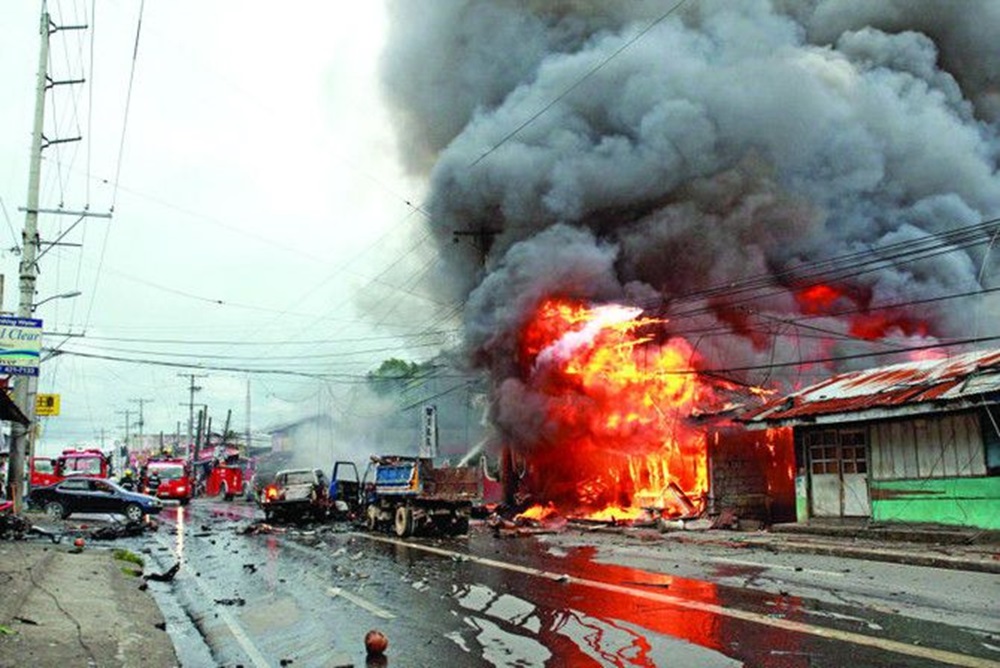On Sunday, a bomb went off during a Catholic mass in the southern Philippines, a region rife with conflict, killing four people and wounding seven. According to provincial police Chief Allan Nobleza, the incident occurred during a routine service at Mindanao State University’s gymnasium in Marawi, the country’s largest Muslim metropolis.
“We’re looking into whether it was an IED or grenade throwing,” Nobleza explained, referring to an improvised explosive device.
Mindanao State University told CNN “the act of violence” and postponed classes while increasing security on campus.
“We stand in solidarity with our Christian community and all those affected by this tragedy,” the school said in a statement.
Photos released on the Lanao del Sur province government’s Facebook page showed Governor Mamintal Adiong visiting “wounded victims of the bombing” at a medical facility.
Marawi Mayor Majul Gandamra urged the Muslim and Christian populations to be united.
“Our city has long been a beacon of peaceful coexistence and harmony, and we will not allow such acts of violence to overshadow our collective commitment to peace and unity,” Gandamra said in a statement condemning the incident.
The incident occurred after the Philippine military launched an airstrike on Mindanao on Friday, killing 11 Islamist militants from the Dawlah Islamiyah-Philippines organization.
The military claimed Saturday that the gang was plotting assaults in Maguindanao del Sur province. Lanao del Sur and Maguindanao del Sur are part of Muslim Mindanao’s Bangsamoro Autonomous Region.
Militant attacks on buses, Catholic churches, and public markets have been a characteristic of the region’s decades-long turmoil.
In 2014, Manila signed a peace treaty with the Moro Islamic Liberation Front, the country’s largest rebel organization, effectively ending their deadly armed conflict.
Smaller groups of Muslim fighters opposed to the peace pact, including militants claiming loyalty to the Islamic State group, remain. Communist insurgents are also active in the region.
In May 2017, hundreds of pro-IS foreign and local militants stormed Marawi. After a five-month war that claimed over a thousand deaths, the Philippine troops reclaimed the destroyed city.
Nobleza said police were looking into whether the incident on Sunday was related to the air strike on Friday. Nobleza said another avenue of inquiry was whether remnants of the Marawi siege by Maute and Abu Sayyaf extremist groups were involved.
The Philippines’ Muslim insurgency scenario was marked by historical, complicated, and multiple hostilities, mainly in Mindanao’s southern region. In these battles, various insurgent organizations have been active, each with their own set of grievances, ambitions, and ideology.
The Moro Islamic Liberation Front (MILF), for example, has long advocated for greater autonomy or independence for Mindanao’s Muslim-majority provinces. The MILF held peace talks with the Philippine government, which resulted in the signing of a comprehensive peace deal in 2014. The agreement planned to establish the Bangsamoro Autonomous Region in Muslim Mindanao (BARMM) to meet the Muslim population’s political and economic concerns.
Despite these attempts, other groups, such as the Abu Sayyaf Group (ASG) and the Bangsamoro Islamic Freedom Fighters (BIFF), continued to oppose government programs, engaging in actions ranging from insurgency to criminal acts like as kidnappings and bombings. The presence of these groups has caused obstacles to the region’s overall peace and stability.
It’s worth noting that the situation may have changed after my last post. For the most up-to-date information on the situation of the Muslim insurgency in the Philippines, I recommend consulting more current sources. The region’s peace process and security dynamics are fluid, and events may have occurred since my latest knowledge update in January 2022.
Earthquake in the Philippines
Late Saturday, a 7.5-magnitude earthquake hit Mindanao in the southern Philippines, prompting evacuation orders in certain areas and predictions of tsunami waves one meter or higher along the shores of southwestern Japan.
Phivolcs, the Philippines’ Seismology Agency, warned that the waves can reach the country as early as midnight and keep going for hours.
Some coastlines in the Philippines might experience waves as high as three meters (10 feet) above sea level, according to the United States Tsunami Warning System.
“Boats already at sea during this period should stay offshore in deep waters until further advised,” Phivolcs warned, urging locals in the provinces of Surigao Del Sur and Davao Oriental to “immediately evacuate” or “move farther inland.”
Tsunami waves reaching Japan’s southwestern shore might reach up to three feet in height, according to Japanese broadcaster NHK. This could happen as early as 1:30 a.m. on Sunday, thirty minutes later.
Earthquakes are common in the Philippines, which lies on the “Ring of Fire,” a belt of volcanoes circling the Pacific Ocean that is prone to seismic activity.
The European-Mediterranean Seismological Center, or EMSC, said a quake of magnitude 7.5 had struck at a depth of 63 kilometers (40 miles).








